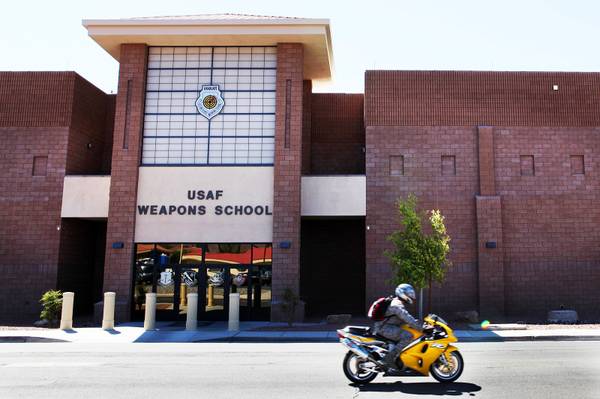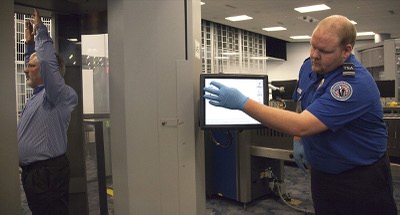Sun coverage
Sequester cuts hitting home
According to the White House, Nevada is set to lose federal funding for:
• 170 teachers, including 50 in special education; affecting at least 14,000 children
• Head Start services for about 300 children, and child care services for another 100
• Approximately $2 million for various conservation-related matters
• 3,000 civilian employees of the Defense Department
• Approximately $1 million in public health programs, and another $78,000 for children’s vaccines
• Job search, referrals and placement programs for approximately 10,800 people.
• $424,000 for programs that provide meals to seniors
• $181,000 in law enforcement grants
One hundred and seventy teachers. Three thousand civilian employees of the Defense Department. Nearly 11,000 job seekers. Not to mention anybody whose livelihood depends on tourists coming to town.
According to the White House, these are just some of the Nevadans who will be affected by the force of the sudden budget cuts known as the sequester, should it go into effect on Friday.
The cuts “will slow our economy, eliminate good jobs, and leave a lot of folks who are already pretty thinly stretched scrambling to figure out what to do,” President Barack Obama said Monday. “These cuts do not have to happen. Congress can turn them off anytime with just a little bit of compromise.”
But with only four days left — and only faint signs that a deal is in the works — state, county and local institutions that rely on federal government dollars to keep going are bracing for the fiscal blow.
The sequester would result in about a 10 percent, across-the-board cut in federal funding for affected federal departments and agencies.
Local and state institutions that depend on that money have known since Congress approved the sequester that half of the cuts would come from military and security, and half from other programs. But until this week, it was not clear how much of the 10 percent cut would trickle down to each state.
In Nevada, the defense budget for payroll at Nellis Air Force Base and Fallon Naval Air Base is being slashed by $12.1 million. Base operations for the Air Force are being slashed by about $2 million on top of that.
That may seem like a drop in the bucket when compared with the military’s overall budget: In fiscal 2011, for example, the payroll for just Nellis Air Force base was $856.1 million, $302.2 of that directed toward civilian employees and contractors.
But for the 3,000 civilian employees of Nevada military bases who will be furloughed, it’s a pay cut.
Nationally, many of the country’s aviation personnel — including TSA security officers and Federal Aviation Administration air traffic controllers — will also be furloughed, for up to seven work days.
When multiplied by 50,000 TSA screeners and thousands more air traffic controllers and technicians, the reduction in man hours is expected to be realized in longer lines at airports, and fewer planes flying through the air.
That is not good news for Nevada’s tourism sector, which depends on people flying in and out of the city with as few complications as possible.
“In Southern Nevada we’re really concerned. McCarran has 41 million come through that place every year,” Sen. Harry Reid said Monday. “We’re told there are going to be long waiting lines; we don’t need that, it should be avoided — it’s unnecessary.”
Nevada’s education sector could also face setbacks because of the sequester.
Clark County, the largest school district in the state and the fifth-largest school district in the country, was recently selected for special federal funding as part of the Turnaround Schools initiative. But that money isn’t sequester-proof.
In its state-by-state report, the White House estimated that Nevada would lose almost $13 million in federal funding for primary, secondary and special education programs. That equates to 170 teacher and teacher aide positions that might be eliminated.
Head Start funding and child care grants are also on the list of cuts.
In public health, more than $1 million will disappear from programs such as child vaccines, HIV testing and infectious diseases. Several hundred thousand dollars are also set to be slashed from police initiatives, and job training.
When he first proposed the sequester, Obama bet that its terms, now outlined in detail, would be so awful that lawmakers would not even conceive of letting their disagreements allow them to take effect.
And Nevada lawmakers of both political stripes do agree that the sequester cuts would be awful for the state.
“Yesterday’s report from the White House only served to remind us that the across-the-board cuts will eliminate good-paying jobs in Southern Nevada and put services that protect our nation, support our economy, educate our children, and invest in our future on the cutting block,” said Rep. Dina Titus, D-Nev.
“Certainly the cuts to various programs as outlined by the White House and other studies would have a negative impact on citizens in Nevada,” said Greg Lemon, a spokesman for Rep. Joe Heck, R-Nev.
“These are not just numbers in a spreadsheet; real people will be hurt by arbitrary across-the-board cuts,” said Rep. Steven Horsford, D-Nev. “We already receive low levels of federal funding to support critical programs in Nevada. We don’t have enough funding in Nevada to start with, and the sequester will leave us with even less.”
But Nevada’s lawmakers are anything but agreed on whose recipe for avoiding the cuts is best.
Nevada Democrats want to offset the sequester cuts with marginal tax increases on the wealthy.
“The Republicans know that the way to solve this is by having people who are really rich pay just a tiny speck more,” Reid said.
Nevada Republicans, however, blame Democrats for slow-walking alternate cut proposals they say would have solved the problem.
“Congressman Heck voted twice to replace the broad axe-style cuts with more common sense, targeted reductions. If the Senate did not agree with the targeted cuts, they could have amended the bill or pass their own bill,” Lemon said.
And some are trying to just wash their hands clean of all culpability.
“I opposed President Obama’s cuts from the very beginning,” said Sen. Dean Heller, pointing out that he had not supported the initial fiscal package that included the sequester in 2011.
Lawmakers on both sides claim the continued divisions in Congress are bewildering.
But it appears no one is more bewildered than the state agencies now scrambling to figure out how they will deal with the cuts.
Even with just four days to go, few Nevada departments charged with managing and disbursing federal funds have answers as to how they will implement these changes, or are even clear on who is going to be giving those answers, should the worst happen.
Spokespersons for Nellis Air Force Base, the Clark County Schools and the Department of Employment, Training, and Rehabilitation did not return requests for information Monday about their plans to absorb the sequester. A spokeswoman for the Department of Health and Human Services suggested that most state agencies would defer to a spokeswoman for the Department of Administration — who did not return a call for comment Monday.
The White House did not detail its methodology for determining exactly how many jobs in each area of the federal budget would be lost on a state-by-state basis if cuts were to go into effect.
But affected state and local agencies may have a little more time to figure out their sequestration than the deadline suggests.
Though the official start date is March 1, the cuts would not actually be realized until the end of March, when the federal government’s current budget expires.
That also gives lawmakers a little extra time to come to an agreement about a way to circumvent the worst effects of the sequester before they actually strike.




Join the Discussion:
Check this out for a full explanation of our conversion to the LiveFyre commenting system and instructions on how to sign up for an account.
Full comments policy